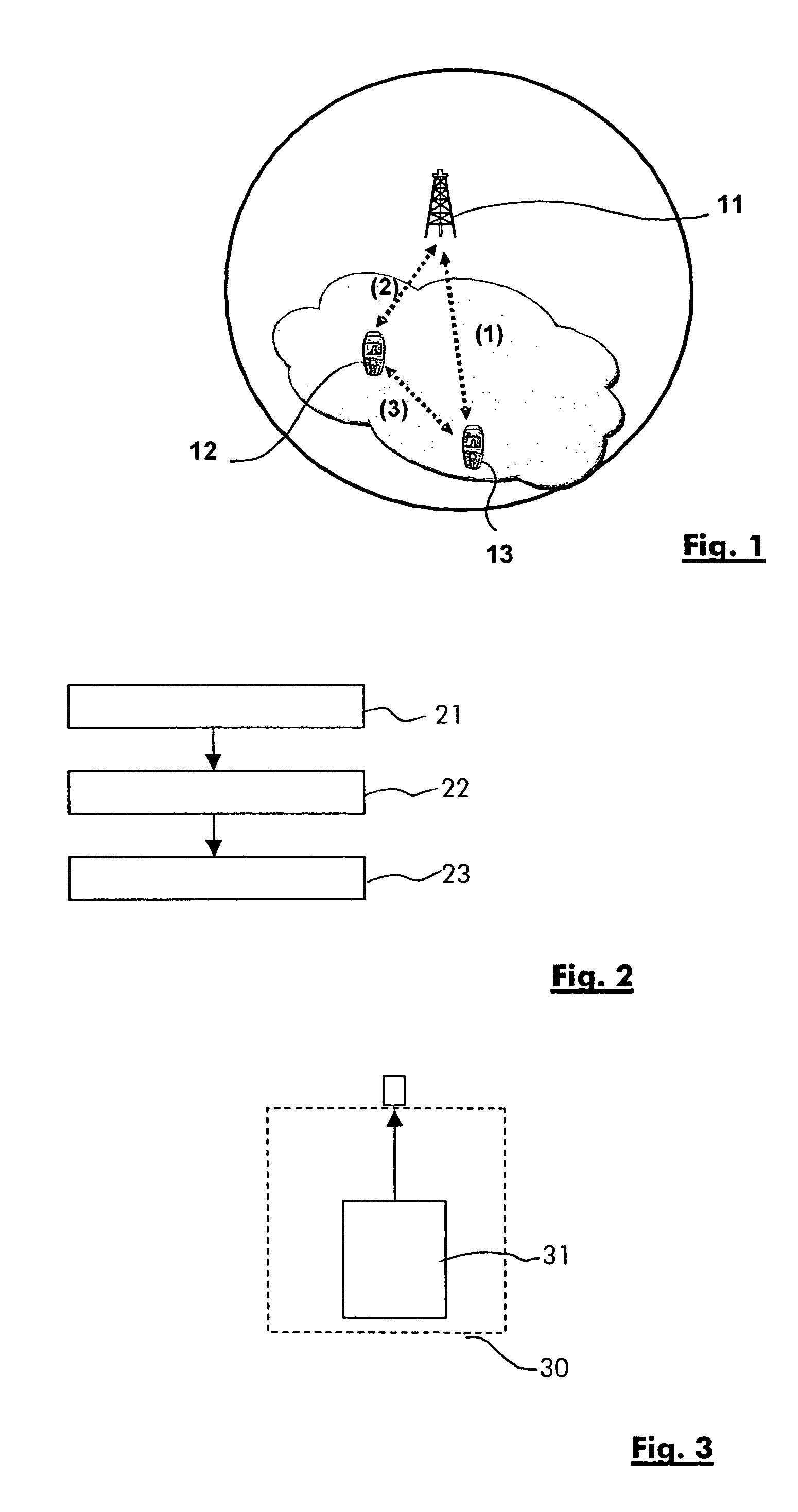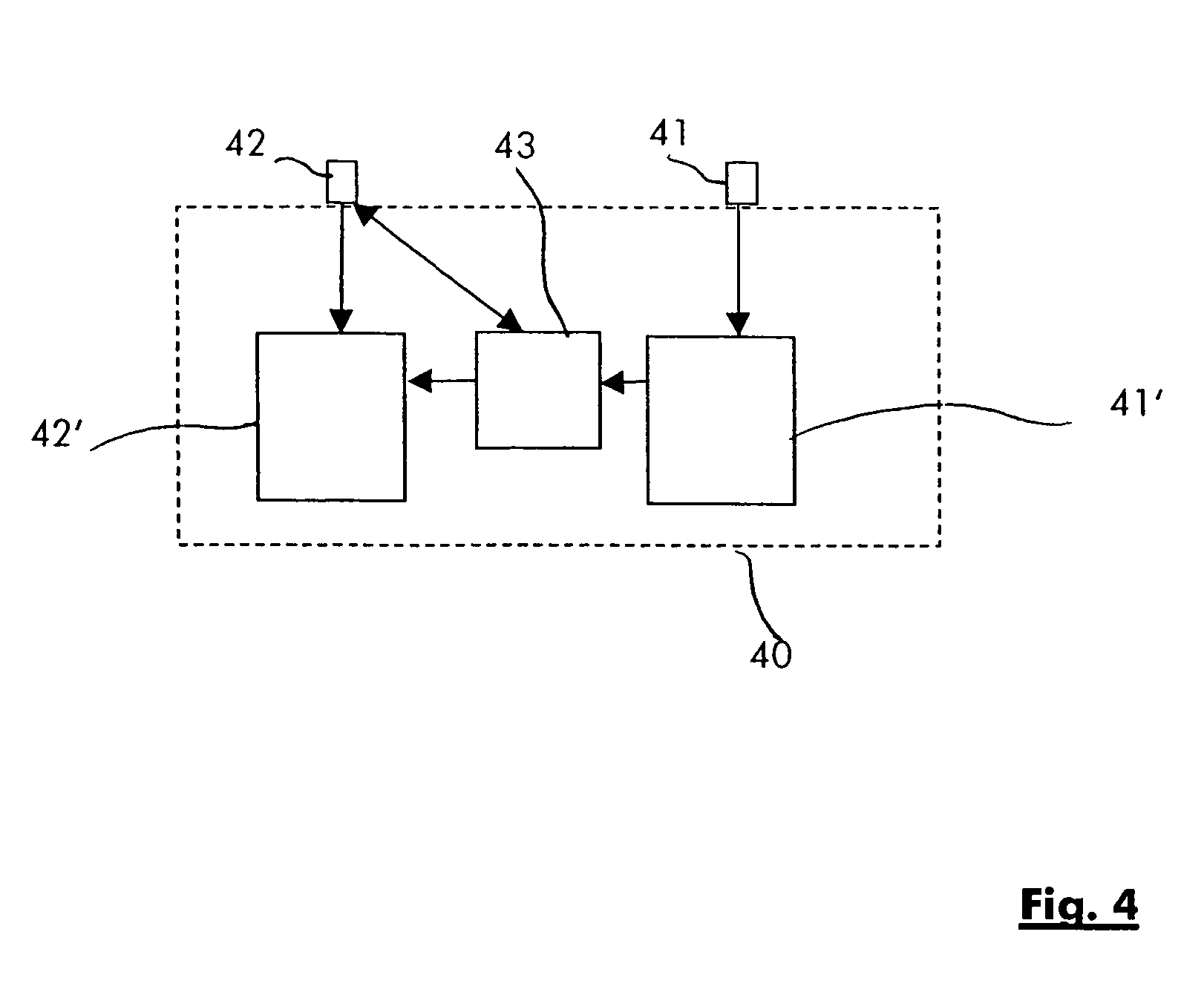Method for controlling the sleep mode on a mobile terminal, corresponding mobile terminal, and corresponding radio access node
a mobile terminal and sleep mode technology, applied in data switching networks, high-level techniques, instruments, etc., can solve the problems of high power consumption, double the maximum access delay of the mobile terminal, and increase the power consumption (roughly double the effect of the maximum access delay), so as to reduce power consumption, improve the response time for service requests, and increase the possibility of standby time
- Summary
- Abstract
- Description
- Claims
- Application Information
AI Technical Summary
Benefits of technology
Problems solved by technology
Method used
Image
Examples
Embodiment Construction
[0046]In the following the invention will be described with reference to a dual mode terminal having a ad-hoc interface and a cellular interface. It will nevertheless be clear for a person skilled in the art that the invention may apply to a multi mode terminal having different ad-hoc air interface to different types of ad-hoc networks.
[0047]FIG. 1 shows a system where the present invention can be implemented. The system comprises a radio access node (e.g. RNC, BSC) 11 belonging to a cellular communication network, a mobile relay 12 and a mobile terminal 13.
[0048]Mobile terminal 13 comprises two radio interfaces, a first one, herein called cellular radio interface, to communicate with radio access node 11 and a second one, herein called ad-hoc radio interface, to communicate with mobile relay 12.
[0049]Cellular radio interface can be a UMTS or a GSM interface while ad-hoc radio interface can be a Bluetooth, wireless LAN (802.11a or 802.11b, 803.11g) interface or an interface for any ...
PUM
 Login to View More
Login to View More Abstract
Description
Claims
Application Information
 Login to View More
Login to View More - R&D
- Intellectual Property
- Life Sciences
- Materials
- Tech Scout
- Unparalleled Data Quality
- Higher Quality Content
- 60% Fewer Hallucinations
Browse by: Latest US Patents, China's latest patents, Technical Efficacy Thesaurus, Application Domain, Technology Topic, Popular Technical Reports.
© 2025 PatSnap. All rights reserved.Legal|Privacy policy|Modern Slavery Act Transparency Statement|Sitemap|About US| Contact US: help@patsnap.com



